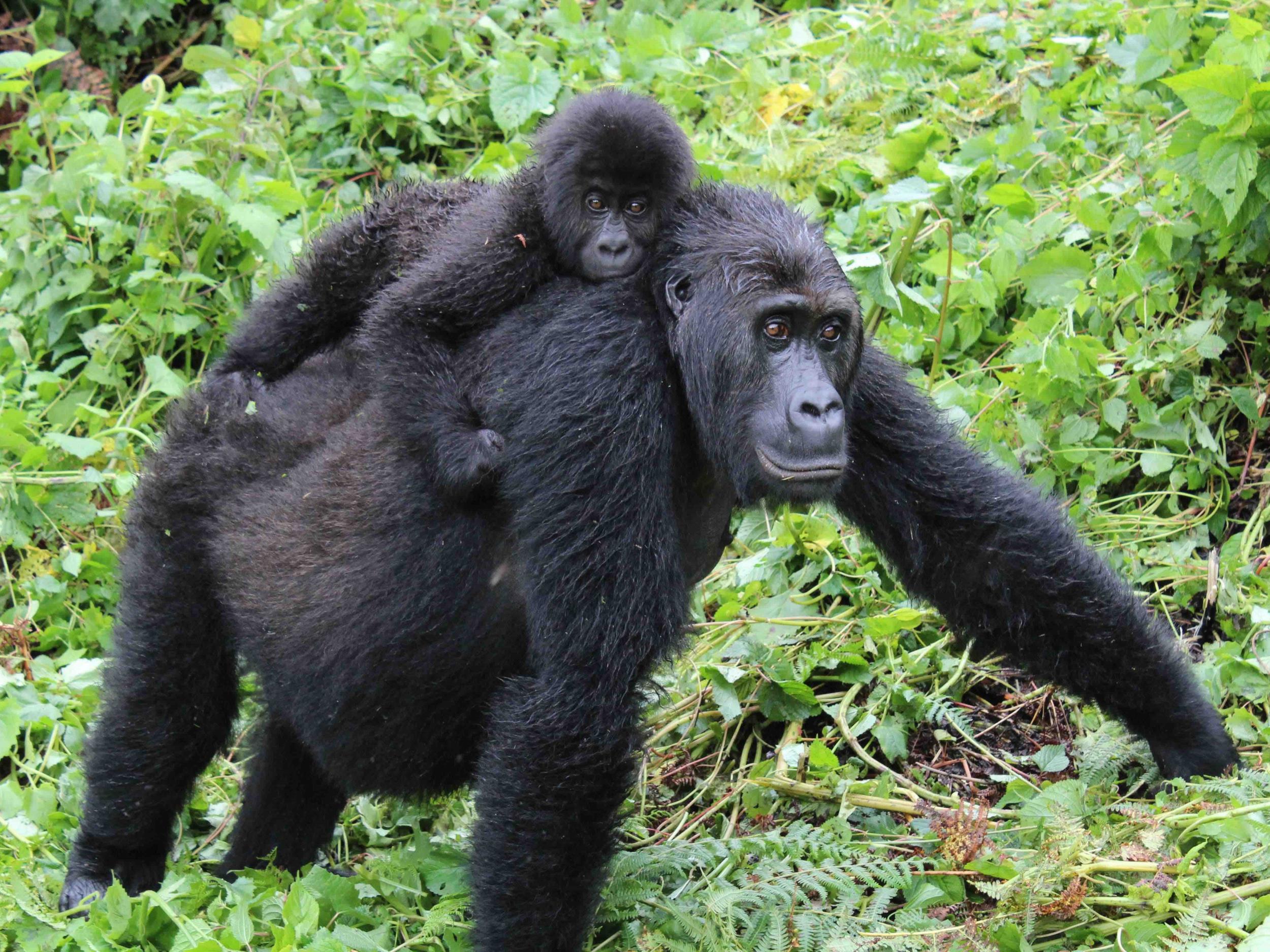Gorilla inbreeding linked to webbed feet and fertility problems in endangered apes, study suggests
Smaller gene pool leaving apes vulnerable to disease outbreaks and habitat change

Your support helps us to tell the story
From reproductive rights to climate change to Big Tech, The Independent is on the ground when the story is developing. Whether it's investigating the financials of Elon Musk's pro-Trump PAC or producing our latest documentary, 'The A Word', which shines a light on the American women fighting for reproductive rights, we know how important it is to parse out the facts from the messaging.
At such a critical moment in US history, we need reporters on the ground. Your donation allows us to keep sending journalists to speak to both sides of the story.
The Independent is trusted by Americans across the entire political spectrum. And unlike many other quality news outlets, we choose not to lock Americans out of our reporting and analysis with paywalls. We believe quality journalism should be available to everyone, paid for by those who can afford it.
Your support makes all the difference.Fertility issues and webbed feet are among the genetic problems threatening a critically endangered group of gorillas living in central Africa, according to a new study.
Based in the Democratic Republic of the Congo, Grauer’s gorilla numbers have declined by 80 per cent in recent decades due to poaching and habitat destruction.
With their numbers plummeting, coupling becomes difficult and the remaining population is now vulnerable to inbreeding, researchers found.
After comparing DNA samples from museum specimens with the current population, they discovered the genetic diversity of these critically endangered apes had declined sharply in recent years
They also identified an uptick in potentially harmful mutations in living gorillas, in genes linked with male fertility and disease resistance.
Further mutations known to stunt finger and toe development were thought to explain why some Grauer’s gorillas have fused digits.
With a smaller gene pool, these apes may lack the genetic resources to adapt to sudden changes in their environment or disease outbreaks, pushing them even further towards extinction.
This effect could be further compounded by damaging mutations spreading around the small population fragment that remains.
“This recent increase in harmful mutations really emphasises the need to reverse the ongoing population decline in Grauer’s gorillas,” said Professor Love Dalen at the Swedish Museum of Natural History one of the authors of the study published in the journal Current Biology.
Along with his colleagues Prof Dalen was able to compare the genetics of gorilla populations spanning the past 100 years to build a picture of the major changes that had taken place.
“Our study highlights that historical museum specimens constitute a unique resource for monitoring recent changes in the genetic status of endangered species,” said fellow author, Professor Katerina Guschanski at Sweden's Uppsala University.
The scientists also examined the closely related mountain gorillas, and found there had not been any significant genetic changes in this group over the past century.
A recent update from the International Union for Conservation of Nature revealed that after intensive conservation work, mountain gorilla populations are gradually increasing in size.
Their reclassification from critically endangered to endangered was heralded as a small but significant victory, and evidence of the results that can be achieved if best practice guidelines are followed to tackle poaching and encourage sustainable tourism.
However, the new study also revealed that mountain gorillas have a surprising advantage over their cousins.
While Grauer’s gorillas have only suffered declines relatively recently as humans have spread into their habitat, mountain gorilla numbers have been relatively low for thousands of years.
This stability may have given natural selection time to gradually weed out harmful mutations, meaning they were more prepared when humans emerged as a threat in the past few decades.
Join our commenting forum
Join thought-provoking conversations, follow other Independent readers and see their replies
Comments